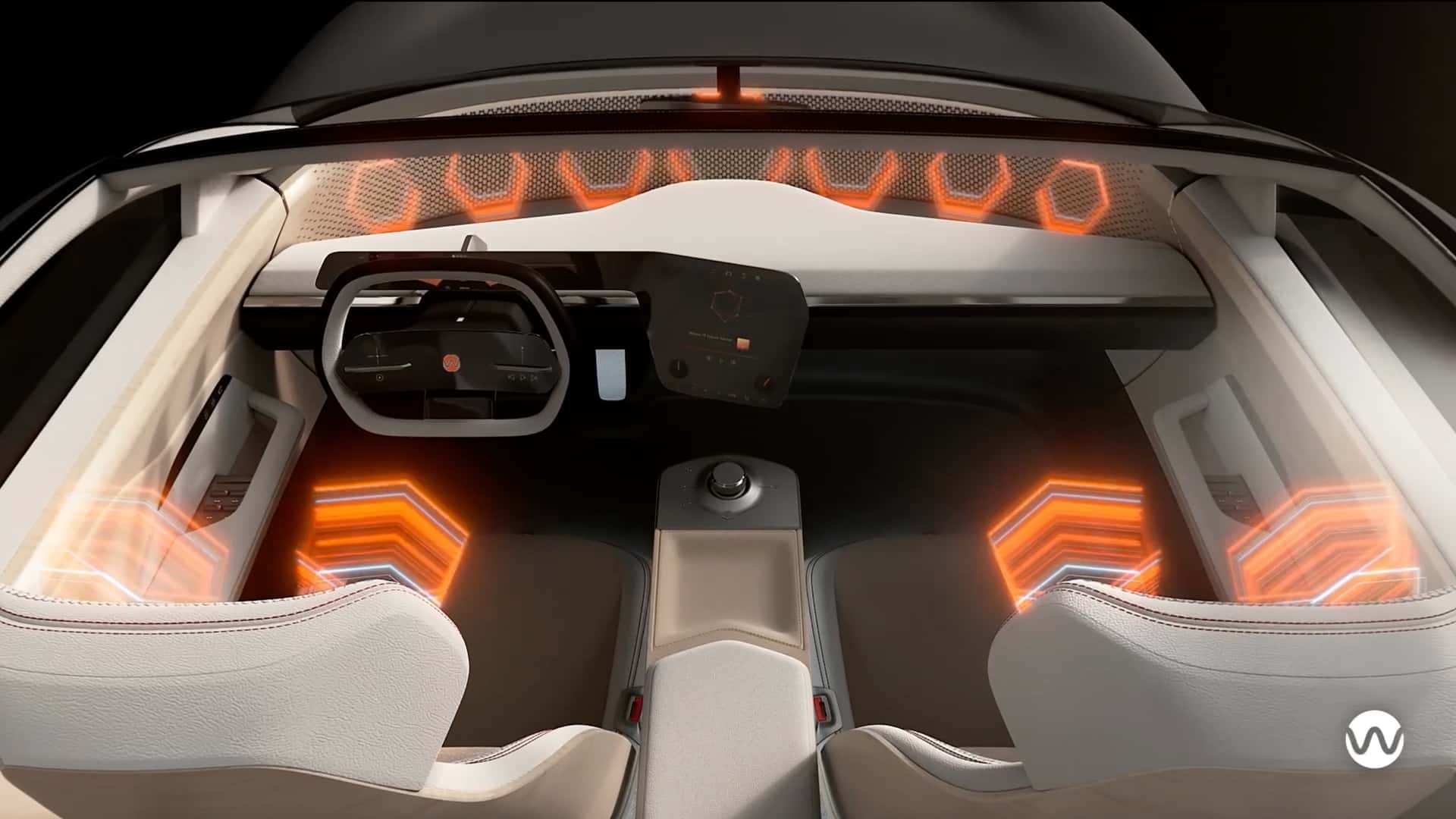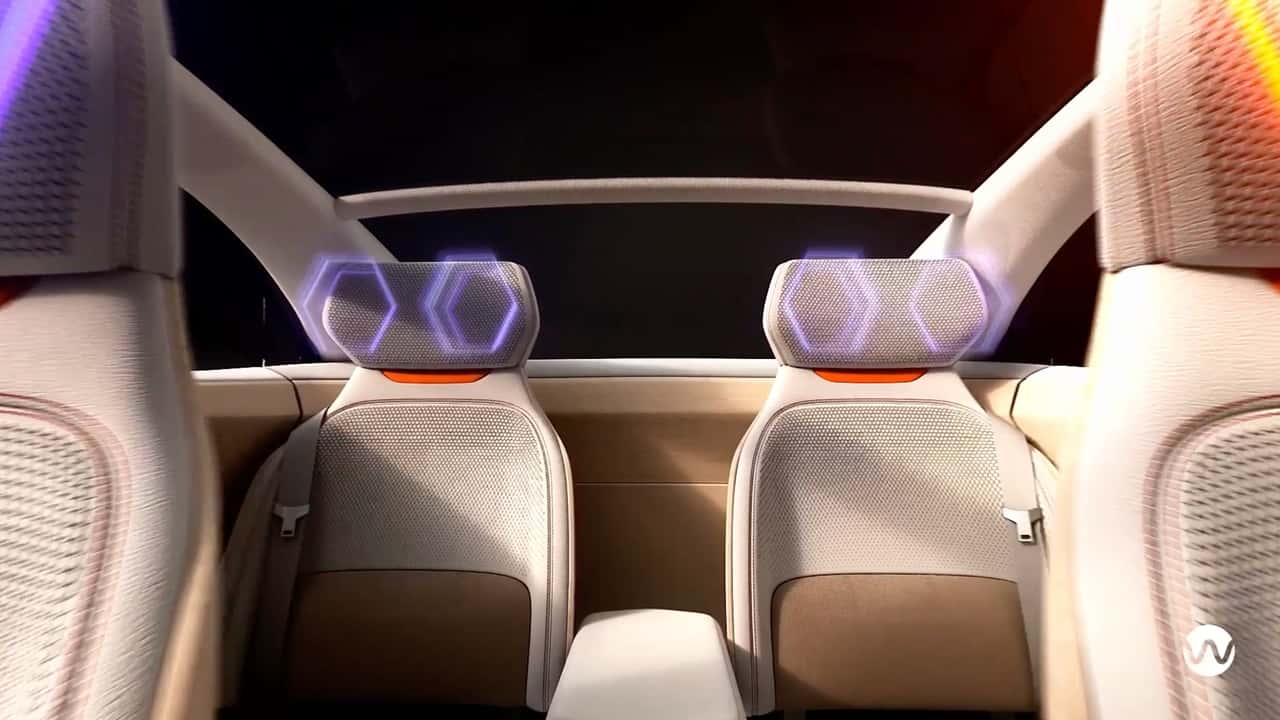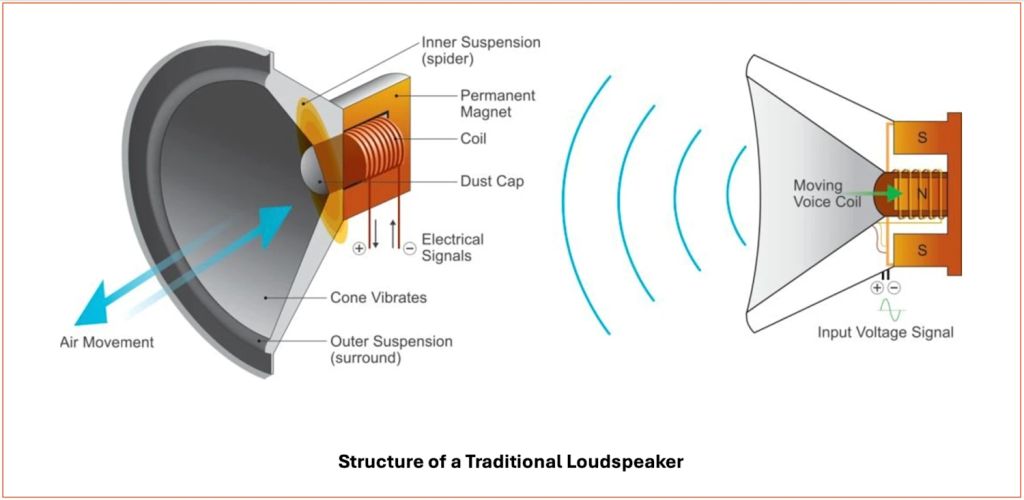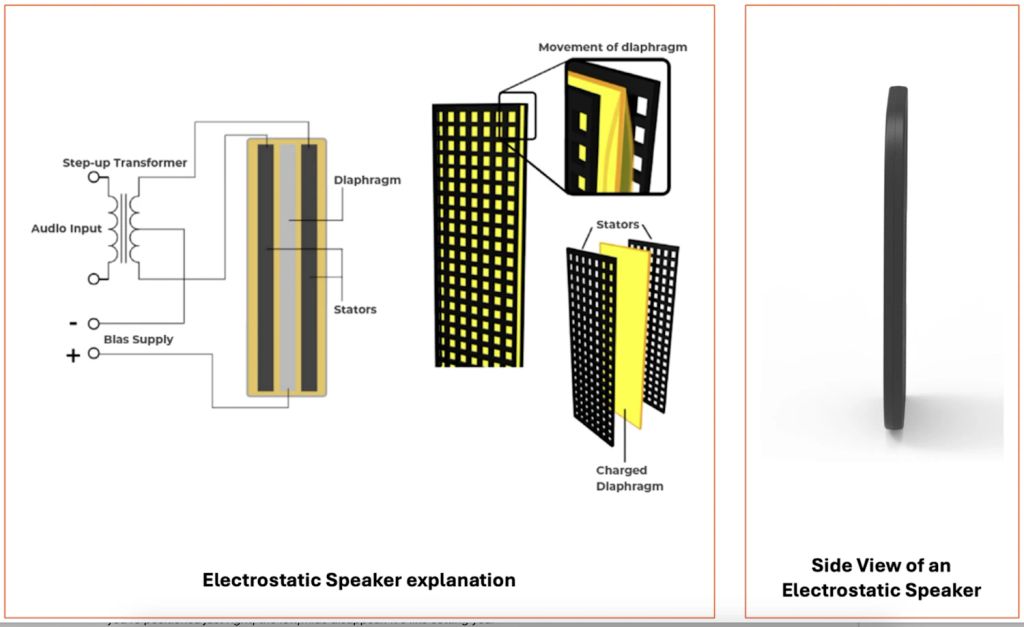
The speakers seem to be able to enhance EV range and offer "personal bubbles" for each passenger with "virtual headphones."
- A UK-based audio equipment manufacturer asserts its automotive sound technology can enhance the driving range of electric vehicles by reducing weight and energy usage.
- The "electrostatic speakers" can create "personal bubbles" within the cabin, reducing noise overlap.
- Reports indicate that they will make their debut in a production electric vehicle this year, with speculation suggesting that this could be the all-electric Range Rover.
Automakers worldwide are continually seeking ways to extend the range of their electric vehicles. Some proven solutions include high-density battery packs, efficient motors, and aerodynamic designs. However, a UK-based company claims to have a pioneering, unconventional approach that could potentially enable your EV to travel further.
That solution is, uh... eco-friendly speakers.
Claiming to offer 90% weight reduction, 90% less energy consumption, and 100% recyclability. This would, of course, be subject to factors such as battery size and vehicle weight.

Electrostatic speakers
The speakers are said to be extremely thin, which makes the packaging relatively straightforward and efficient. It is claimed that the speakers will make their debut in a production vehicle this year, reportedly in the new all-electric Range Rover.
Electrostatic speakers produce sound by utilizing a thin, electrically charged diaphragm suspended between two metal plates. When an audio signal is applied, it generates an electrostatic field that causes the diaphragm to move, resulting in sound waves. According to its theoretical advantages, it is supposed to provide enhanced clarity and low distortion.
In contrast, traditional speakers utilize coils and magnetic fields to produce sound, which, as the company claims, possess excessive mass and a multitude of moving components, thereby resulting in distortion.
According to the company, traditional speakers have limitations when installed in a headrest, particularly in terms of frequency response and coverage area. "With an electrostatic speaker, it is possible to shape the diaphragm to cover the entire headrest area," which enables "each passenger to enjoy a perfectly balanced audio zone, where moving your head does not result in sudden audio drop-offs."
This can help create "personal bubbles" for occupants without "overlapping noise." So, if the driver answers a call, passengers at the back can continue listening to music. And it is likely that occupants won't have to argue over different music tastes or volume levels.
Automakers have been laser-focused on making electric vehicles (EVs) efficient by eliminating unnecessary components, using fewer parts, producing large sections of the underbody through a process known as giga-casting, and adopting a simplified manufacturing approach, similar to Tesla's, in order to enhance range and efficiency. New innovative solutions from suppliers are emerging, but rest assured that your preferred audio systems will not be phased out.
To be clear, if electrostatic speakers do make it into the electric Range Rover as has been reported, we'll definitely review them to see if they can compete effectively with well-established premium audio brands such as Meridian, Burmester, Bose, and others.
Have a suggestion? Reach out to the writer:
Related Stories
- The US is currently too inconsistent and uncertain for widespread adoption of electric vehicles.
- The European Union plans to allocate $105 billion to ensure the implementation of its goals for electric vehicles and clean energy remains on track.
- Hyundai and Kia Delay the Development of Solid-State Batteries Until 2030
- Kia's Ambitious Electric Vehicle Strategy Hit with Uncertainty Due to Tariffs


